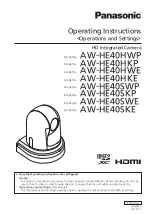
V1.02
Thom Hogan’s Complete Guide to the Nikon D300
Page 210
The swatch of patches shown in Step 4 is there to help you
get a full tonal range display from black to white with a
complete gradation in between. If you arbitrarily set the
brightness higher, you’ll note that several of the patches on
the right side become all white (the opposite, setting too low,
would produce multiple black patches on the left side).
You’ve effectively told the display to show all bright tones as
white—you’ll never be able to see what’s going on in the
highlight regions of your image.
The correct setting for the LCD brightness is to see all 10 of
the tonal patches distinctly from one another and with even
gradations, which almost always means a setting of
-1
to
+1
on the D300 in normal and outdoor light.
But the bigger problem is that the color LCD is not color or
brightness (gamma
72
) profiled. If something looks too bright or
too red on the color LCD, it may or may not be in your actual
photo data. It’s actually worse than that: the color LCD comes
closer to reproducing the sRGB gamut than the AdobeRGB
gamut. If the camera is set to sRGB as the Color Space, the
colors you’ll see are slightly more accurate. Many users
who’ve set AdobeRGB complain of a slight green cast, though
in looking at ColorChecker charts on my color LCD and
moving between the various options, I see very little
meaningful difference.
The
only
way to completely visually assess an image
accurately is to display it on a color-calibrated monitor using
the correct color space profile.
72
Gamma refers to how the mid-tone values are set. In general, the D300’s color LCD
seems to have the gamma set a bit bright.
















































